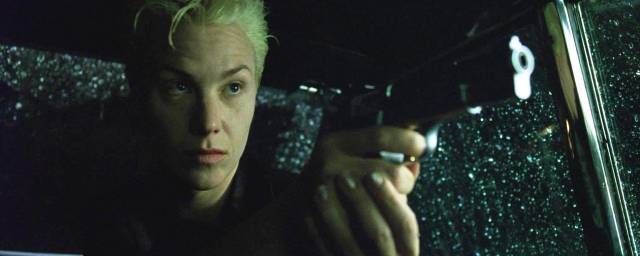While one of the scenes of “Resurrections” refers to it, return to a way of interpreting the first “Matrix”, validated by its co-director Lilly Wachowski.
PLEASE NOTE – The article below contains a slight spoiler on “Matrix Resurrections”, as it relates to the content of one of its scenes. Please go ahead if you haven’t seen the movie yet and don’t want to know anything about it.
Like many of those that make up the first act, this scene from Matrix Resurrections should be sure to bring a smile to your face. As the film itself questions the legacy of the saga, Lana Wachowski features a creative team asking the same questions. The opportunity, for the director, to sweep away some erroneous interpretations, and to evoke others.
Including the one who would like the Matrix to be a metaphor for transidentity. A theory validated by his sister Lilly in August 2020, in a video interview given to Netflix : “That was the original intention, and I’m glad it came out”, she explains. “But the world wasn’t really ready for it [en 1999]. This corporate world was not ready for that. “

Warner Bros. Pictures
Switch (Melinda McClory)
It is especially for this reason that the character of Switch (Belinda McClory) is ultimately only an androgynous character, while Lana and Lilly Wachowski had wished him to be a man in the real world and a woman in the Matrix. .
While emancipation has always been a central theme of their filmography (as the 2019 Playlist Society book about her aptly describes), everything about transition was initially allegorical before it began. be more explicit in Cloud Atlas and Sense8, once theirs is done.
“I don’t know how much my transidentity was present in my subconscious when we were writing the screenplay. [de Matrix] (…) But Lana and I existed in a space where words did not exist, we lived in a world of imagination. That’s why I turned to science fiction and fantasy and why I played Dungeons and Dragons. “
As the site notes Out, several elements support this theory:
- The black screen with data displayed in green in the very first scene, where the word “Trans” (in the inscription “Call trans opt”) is one of the first that the viewer sees.
- the “I thought you were a guy” from Neo to Trinity, when he first meets her. If Thomas Anderson only bases himself on his hacker exploits and not on appearance, the situation has been experienced by many trans women, and here brings the answer: “A lot of guys believe it”.
- The red pill, the same color as the hormonal pills that block testosterone for the benefit of estrogen in the body of a person who wants to be the woman they always knew they were. A theory confirmed by Lana Wachowski in 2020, when the blue pill represents the antidepressants over-prescribed to trans people, at the time, to dissuade them from making their transition.

Warner Bros. Pictures
- The residual inner image, which Morpheus tells Neo about during his first post-awakening return to the Matrix. That is, the way his mind views it, as trans people do not see themselves the same way their respective bodies do.
- Zooming in on the word “System failure”, in the very last scene, and the camera passing between the “M” and the “F”. As if to symbolize the transition from man to woman, and what’s in the middle. Besides echoing the word “Trans” that appears at the very beginning.
For her big comeback to The Matrix universe for the first time since her transition, without her sister Lilly who was keen to stay in the background after hers, Lana Wachowski delves into this metaphor of good in ways in Resurrections. And strengthens a little more the link between the saga which made it enter the Pantheon of the SF, and its following works.
